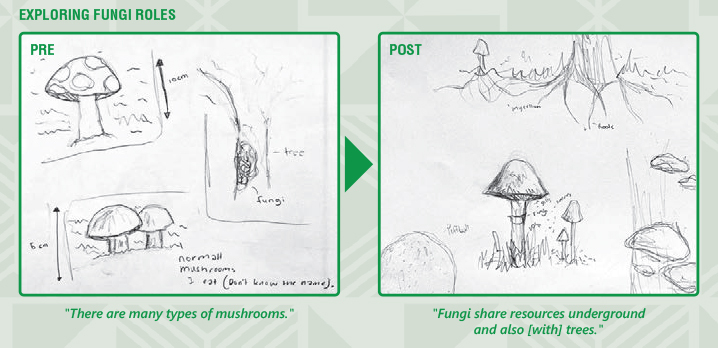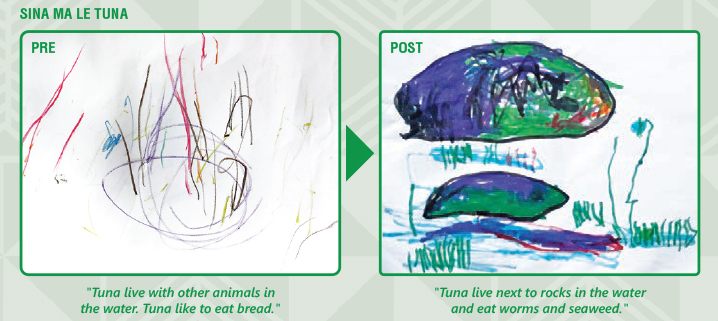Curating data analytics to fit participants' skills and abilities is critical for ensuring accurate, effective and efficient data collection. Dr Rajshree Krishnan explains how Te Hononga Akoranga COMET uses visual evaluation as a method of engaging with and learning from our project participants.
Research supports the use of drawing in science education, emphasising its role in promoting creativity, collaboration and a holistic understanding of STEM subjects. Art integration enhances engagement and accessibility, enabling students to visualise complex concepts and improve information retention. Furthermore, it breaks cultural barriers and facilitates conversations. This can be incredibly valuable for assessing STEM learning, especially for younger learners.

Our recent WeSTEM showcase features two projects, Sina ma le Tuna and Exploring Fungi Roles, that used art and visual assessments to evaluate student learning. The students, aged 3-11, were initially asked to draw pictures using their existing knowledge of eels or fungi respectively. As the projects progressed, they were encouraged to redraw their concepts, comparing and reflecting upon their original and revised drawings.
The growth in students' understanding was unmistakable, with many demonstrating increased knowledge and elaboration of facts, as well as understanding and utilising scientific vocabulary.

The opportunity for creative expression provided insights into students' areas of interest, enjoyment and engagement, which itself offers valuable feedback for teachers. Art evaluations complemented other data collection methods such as questionnaires, accountability reports and observations, affirming the effectiveness of WeSTEM in delivering exciting STEM learning opportunities and equipping teachers with versatile teaching and evaluation techniques.
To read more about these projects and others funded through the WeSTEM participatory science programme, download the WeSTEM 2021–2022 Project Showcase.